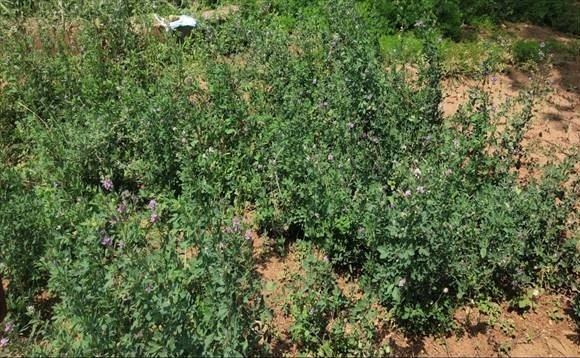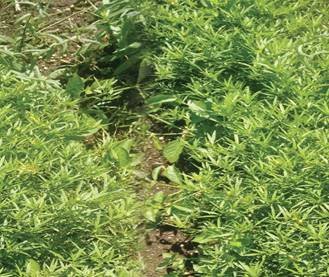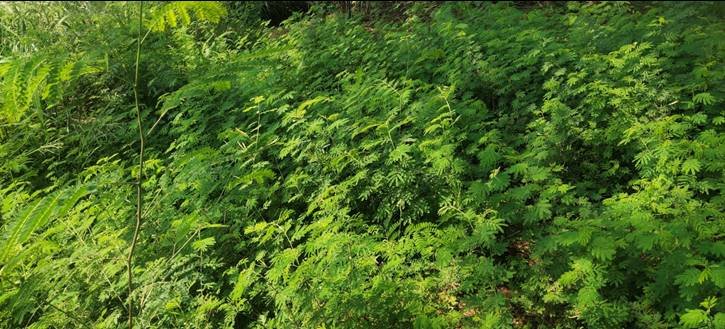CULTIVATION PRACTICES OF LEGUMINOUS PERENNIAL FODDER CROPS
LUCERNE OR ALFALFA
It is perennial legume well adapted to warm temperature and cool subtropical regions. The origin is believed to be south west Asia. This crop withstands the hot climate remarkably well. Lucerne is much in demand as lucerne meal or to a lesser extent for grazing (pasture). It is also grown in tropical countries at altitudes of 500 to 1000 m and above.
It needs well drained loamy soil, rich in lime with neutral pH. It cannot thrive on alkaline soil, but can be grown on acid soil with liberal dressing of lime. It cannot tolerate wet or damp areas.
Varieties
Anand -3, Co-1, RL–88, LH – 84, T-9,etc. Annual types include varieties such as anand 1 and 2
The sowing period for lucerne is September to November. The optimum period is October to mid November. Thorough land preparation is required to obtain good tilth. Crop can be sown on flat beds. The seed rate is 10 kg/ha and sowing should be done in solid rows with a row spacing of 25 cm. Sowing should not be too deep. To attain uniformity in sowing, the seed is mixed with equal quantities of fine sand or soil before sowing. To ensure complete germination, sometimes it is advocated to soak the seed over night and shade dry it before sowing. After this, the seed should be inoculated with suitable rhizobium culture. For this inoculation, jaggery solution is prepared by boiling jaggery (100g) in water (250 ml). Cool it and add the rhizobium culture (200g) to the solution. Later this is mixed with the seed (4 kg) in a seed treating drum. This seed (4 kg) is sufficient to sow one acre.
Lucerne has a high requirement of phosphorus, potassium, calcium and sulphur. It responds well to FYM application. About 20 t/ha of FYM should be applied every year. The nitrogen, phosphorus, potassium requirement of the crop every year is 20-30 kg N: 100 kg P2O5:40 kg K2O /ha. Phosphorus should be applied in the form of single super phosphate and nitrogen as ammonium sulphate. Micro nutrient deficiencies are common in lucerne. Boron, manganese, molybdenum, iron and zinc deficiencies are seen in this crop. In order to avoid these deficiency problems, it is always advised to apply FYM regularly every year.
Water requirement of this crop is quite high. Initially irrigations are given every week and later at 10-12 days interval. The crop requires 15-18 irrigations in a year.
The crop requires thorough weeding in the initial stages. As the crop is sown in lines, weeds can be controlled easily either using manual labour or implements like push hoes, etc. For chemical weeds control, Pendimethalin@0.75-1.0 kg a.i., /ha can be applied 2-3 days after sowing as pre- emergence. The crop needs weed free conditions through-out the year. So weeds have to be controlled by adopting periodical hand weeding.
Dodder (Cuscuta sp) a partial stem parasite on lucerne is big menace. Dodder plants should be carefully removed along with the host plant and burnt. Dodder plants should not be allowed to set seed. It contaminates the lucerne seed and spreads to new areas. The seed can live in soil for very long periods. Crop rotation can reduce the problem to some extent. Always use good seed of lucerne for sowing that is free of dodder seed. While adopting crop rotation, trap crops such as green gram, black gram, etc, should be grown which help to minimize the problem of cuscuta.
First cut in lucerne can be taken 50-60 days after sowing, subsequent cuts are taken at 20-25 days intervals. Totally 8-10 cuttings may be obtained in a year with 60-70 t/ha of green fodder yield. The crop can be retained for 3-4 years on the same field.
Seed production in lucerne is also important. A cut for fodder is taken in the last week of February. After attaining the normal canopy development the crop is subjected to moisture stress by withholding one irrigation, to discourage vegetative growth and encourage profuse flowering. After complete flowering, normal irrigations should be restored. The crop is highly cross pollinated and as such insect activity is more important. Do not spray any chemicals during this period. The blue flowers.gradually turn to green pods that are spiral in nature. When 2/3 of pods turn brown, crop is cut near the base, left to cure for few days and then threshed. The seed yield is usually low (150-200 kg/ha).
Lucerne is very rich in crude protin (18-21% on dry weight basis). Lucerne, like many other legumes, also contains saponins (alkaloid) and continuous sole feeding with green fodder of lucerne may lead to the problem of bloat in ruminants. It is always advised to mix with non-legume fodder for feeding the livestock.
Lucerne is a important green for horses, rabbits and milch cattle. It is conserved as hay. A nutritious, protein rich animal diet namely lucerne meal is prepared in western countries utilizing the hay.

STYLOSANTHES
Two important species are widely cultivated – Stylosanthes hamata and Stylosanthes scabra.
Origin of stylo is Brazil. Stylo is an erect growing perennial forage legume. Grows 0.6 – 1.8 m tall . Stem is coarse, hairy and becomes woody with age. Leaves are trifoliate with leaflets long, rather narrow, varying in size and color. Pods are single seeded. Seeds are yellowish brown, kidney shaped. Crude protein 14-18%
It is used extensively in agroforestry systems mainly in hortipastoral system that combines well with perennial grasses like guinea grass. Stylo is adapted to tropical climate and tolerant to low fertitily, drought and poor drainage soils. It grows well on sandy soils and shallow rocky soils. Tolerant to acidic soils. Land should be thoroughly ploughed and made into a plain land. Seed rate is 4 -5 kg/ha
Stylo grows well in areas with rainfall of minimum 800 mm. Requires irrigation at regular intervals. Weeding is a bit easy in stylo based pastures because it tolerates weed problem.
First cut can be taken at 55-60 days after sowing when sown in monsoon, 65-70 days when sown during winter and subsequent cuts at 35-40 days interval. 14-16t green forage /ha/yr obtained 4- 5 cuts.

| Cultivation practice | Lucerne | Stylo | Hedge lucerne |
| Varieties | Annuals: Anand-1 Anand-2 | Hamata,siyabiyana, scrabra guanensis | Velimasal |
| Perienniels:RL-88,T9, co1& anand 3 | |||
| Soils | Black soil with well dain soils | All type soils (sandy, light, acidic waste lands and grass lands) except water stagnated soils | All type soils,Well drain soils, |
| Sowing time | October – December | June-july and Aug, | June -july. |
| Seed rate kg/ac | For green fodder: 6kg for seed 3kg | Broad casting 6-8kgs | 3kg transplanting, |
| Row plantation 4-5kg | 4-5kg row planting (50cm) | ||
| Spacing | 30 cm between rows | 15 X 30 cm | 50 X 50 cm |
| Recommended dose of fertilizers(NPK kg per acre) | FYM 8-10 tones | FYM 5-10 tones 12:25:12 NPK | FYM 5-8 tones Apply 8:24:12 NPK |
| 18:32:16 NPK | Apply 10kg nitrogen after every cut | apply 10kg nitrogen after every cut | |
| Apply 10kg nitrogen after every cut | |||
| Harvesting time | 1st cut 55-60 days after sowing subsequent cuts 25-30 DAS | 1st cut 60-70 days after sowing subsequent cuts 60 Days after every cut | 1st cut 90 days after sowing subsequent cuts 50 Days after every cut |
| Green fodder yield tonnes/ acre | Total 8-10 cuts per acre per year, | Total 12 –14tonnes per acre. | 50 tonnes in 4-6 cuts per year per acre |
| 30-32 tonnes per acre | Under irrigated 25t | ||
| Dry fodder:7-8t | |||
| Other information | *Crude protein content:18-20 % | *Crude protein content:14-18%. | Suitable for sheep nad goat, can be grown with hybrid napier as inter crop(1:1) |
| Weed control spray Pendimithalin @5ml per litre of water with in 48 hrs of sowing. | Drought resistance, with stand water stagnation and shade. | Crude protein 15-18% | |
| Seed treatment with hot water will improve germination% |

